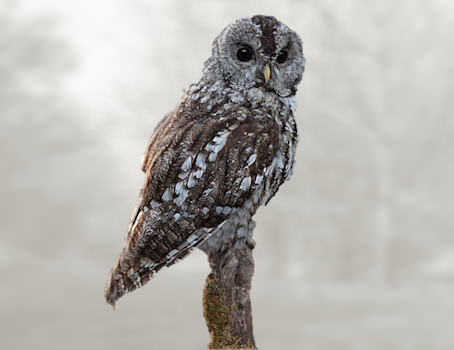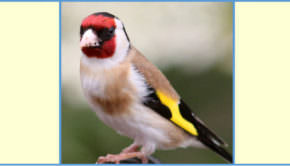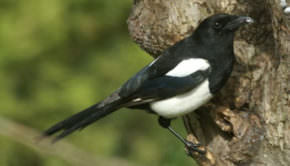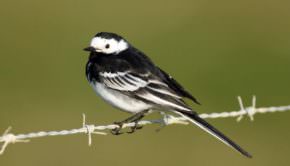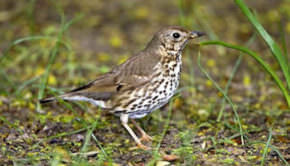Biodiversity Group: Bird of the Month: The Tawny Owl
The Tawny Owl is about size of a pigeon. It has a rounded body and head, a ring of dark feathers around its face and mainly red-brown to grey-brown plumage. Its large eyes enable it to see in almost total darkness but only in limited colour or monochrome. The eyes cannot move or roll, instead its head can turn 270 degrees to the left or right, as well as upside-down. The left ear opening is higher on the head than the larger right ear and tilts downwards, improving sensitivity to sound from below. A passage through the skull links the eardrums and small differences in the time of arrival of a sound at each ear enables its source to be pinpointed. Both ear openings are hidden under the facial disk feathers which are specialised to be transparent to sound. The Tawny Owl is particularly vocal from November to February when it is defending its breeding territory. It is mostly monogamous and will usually pair off at the age of one. Unlined nests are made in holes in trees and houses, in crows, magpies and grey herons nests as well as squirrel dreys and nest boxes. Breeding starts in about mid-March when 2-6 eggs are laid at intervals of up to a week apart. The female alone incubates them while the male feeds her and the chicks once they hatch. The young leave the nest around 25 days after hatching, well before they can fly, and sit around in the branches near to the nest. Although unable to fly owlets on the ground are far from helpless as they are excellent climbers and can climb from the ground straight up the trunk of a tree to the highest branches at an astonishing rate! After around ten days they are able to fly for the first time but still remain dependent on the adults for food for another 10 – 12 weeks. Tawny Owls eat small mammals, birds, frogs, fish, insects and even worms. They have also been known to break open house martin’s nests at night and take the young while the urban Tawny Owl will take goldfish and has become a specialist house sparrow predator. At the end of the breeding season the adult birds drive their youngsters out of their territories with the result that nearly two-thirds will die in their first year. Research has revealed that the Tawny Owl has an excellent spatial memory (in fact better than most other birds that have been tested) which means they develop and retain an excellent ‘knowledge’ of where to find prey in a given area. Being mostly nocturnal, the Tawny Owl is poorly studied but it is believed to have been in a slow decline since the mid-1980s with its range contracting.
Did You Know?
- Tawny owls are famous for the fierce defence of their young: bird ringers usually wear crash helmets with visors to protect themselves when ringing baby tawnies.
- Because they don’t like flying over large expanses of water they are absent from many of our islands, including the Isles of Man and Wight, the Outer Hebrides, Orkney and Shetland.
- Hill hooter and hollering owl are old names for the tawny while several names are a reminder of its daytime roosts: wood owl, beech owl and ivy owl.
- Tawnies are specially adapted for hunting in woodland with short wings which give them great manoeuvrability. Like almost all owls, the wings of a Tawny Owl are completely silent.
- The typical life span of a tawny owl is 4 years with the oldest recorded wild bird being 18 years.
- The collective name for a group of owls is a parliament or sometimes a wisdom of owls.

